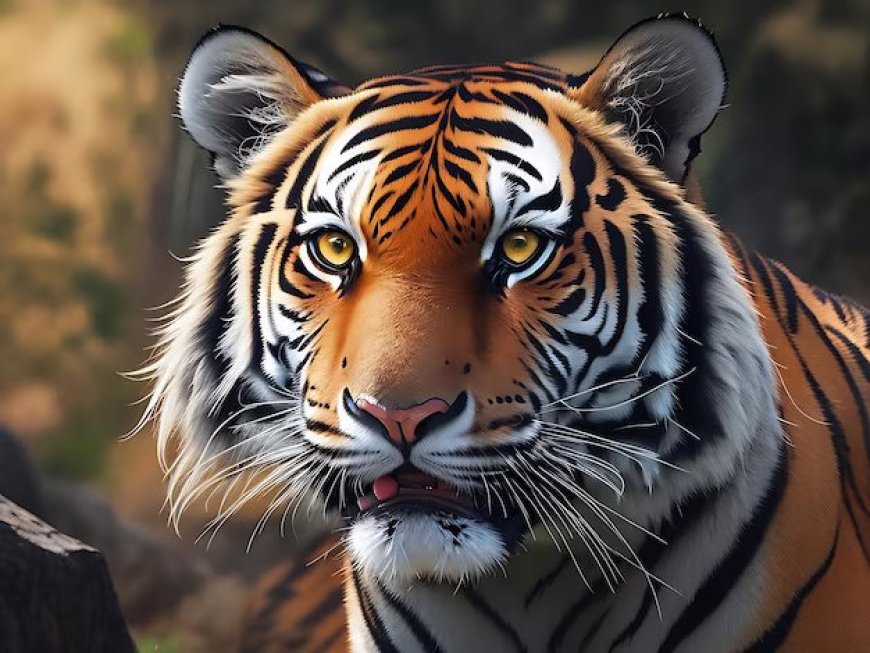Eye of the Tiger: Thrill of the sight
Tracking the elusive Indian tiger is a challenging yet fascinating endeavor, steeped in history

Lucknow: Tracking the elusive Indian tiger is a challenging yet fascinating endeavor, steeped in history, cultural significance, and modern conservation efforts. The Royal Bengal tiger (Panthera tigris tigris) is the most widely found tiger subspecies, with its habitat ranging across the Indian subcontinent.
Despite being the national animal of India, the Bengal tiger remains threatened by poaching, habitat loss, and human-wildlife conflict. Here is a look at the journey of tracking these majestic creatures, spanning historical context, current tracking methods, and conservation challenges.
Adding perspective
The Indian tiger has long been a symbol of strength and majesty in Indian culture. Historically, tigers roamed freely across vast stretches of forest, grasslands, and wetlands. Ancient Indian texts, folklore, and art often depicted tigers as both revered and feared creatures. During the colonial era, hunting tigers became a popular sport among British officers and Indian royalty, leading to a significant decline in their population. By the early 20th century, the tiger population had plummeted due to rampant hunting and habitat destruction.
The turning point came in 1973 with the launch of Project Tiger, a pioneering conservation initiative by the Indian government. The project aimed to stabilize and increase the tiger population through habitat management, anti-poaching measures, and public awareness campaigns. Today, Project Tiger continues to play a crucial role in tiger conservation, with 53 tiger reserves established across India.
Tracking Methods
Traditional Tracking
Traditional tracking methods involve the expertise of local trackers and forest guards who possess an intimate knowledge of the terrain and tiger behavior. These trackers look for signs such as pugmarks (tiger footprints), scat (tiger feces), scratch marks on trees, and territorial markings. Pugmarks, in particular, provide valuable information about the tiger's size, age, and gender. Experienced trackers can even distinguish individual tigers based on subtle differences in their pugmarks.
Camera Traps
Camera traps have revolutionized tiger tracking by providing a non-intrusive method to monitor tiger populations. These motion-activated cameras are strategically placed along animal trails, water sources, and other areas frequented by tigers. When a tiger passes by, the camera captures high-resolution images or videos, which are later analyzed to identify individual tigers through their unique stripe patterns. Camera traps offer insights into tiger behavior, population density, and movement patterns, aiding in effective conservation planning.

GPS Collars
GPS collars are another advanced tracking tool used to monitor tigers. These collars are fitted around the necks of tigers and transmit real-time location data via satellite. Researchers can track the movements of collared tigers, study their home range, and understand their interaction with the environment. GPS collars provide critical information for managing tiger habitats and mitigating human-wildlife conflict. However, collaring tigers requires careful planning and expertise to ensure the safety and well-being of the animals.
DNA Analysis
DNA analysis has emerged as a powerful tool for tracking tigers and understanding their genetic diversity. By collecting samples such as scat, hair, or tissue, researchers can extract DNA and analyze it to identify individual tigers, determine their relatedness, and assess the genetic health of the population. DNA analysis helps in monitoring the genetic diversity of tiger populations, which is crucial for their long-term survival.
Conservation Challenges
Despite significant progress in tiger conservation, numerous challenges persist. Poaching remains one of the most critical threats to tigers. Tigers are poached for their skin, bones, and other body parts, which are highly valued in illegal wildlife trade. Poachers often use snares, traps, and firearms to capture or kill tigers, posing a constant threat to their survival.
Habitat loss is another major challenge. Rapid urbanization, agriculture expansion, and infrastructure development have led to the fragmentation and degradation of tiger habitats. This not only reduces the available space for tigers but also isolates populations, making them more vulnerable to inbreeding and genetic decline. Conservationists are working to create and maintain wildlife corridors that connect fragmented habitats, allowing tigers to move freely and find mates.
Human-wildlife conflict is a growing concern as human populations encroach on tiger habitats. Livestock depredation and attacks on humans can lead to retaliatory killings of tigers. Conservation organizations are implementing measures to mitigate conflict, such as providing compensation for livestock losses, promoting alternative livelihoods, and raising awareness about coexistence.
Climate change is an emerging threat that could impact tiger habitats and prey availability. Changes in temperature and rainfall patterns can alter the distribution of prey species and affect the availability of water sources. Conservation strategies must consider the potential impacts of climate change and incorporate adaptive measures to ensure the long-term survival of tigers.
Tracking the elusive Indian tiger is a multifaceted endeavor that combines traditional knowledge with modern technology. While significant strides have been made in tiger conservation, ongoing efforts are essential to address the challenges posed by poaching, habitat loss, human-wildlife conflict, and climate change. The survival of the Bengal tiger is not only vital for maintaining biodiversity but also for preserving the cultural heritage and natural beauty of India. Through continued dedication and collaboration, we can ensure that these majestic creatures continue to roam the forests of India for generations to come.
What's Your Reaction?














































